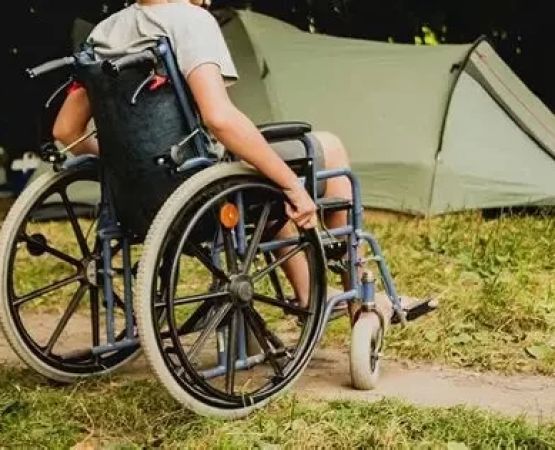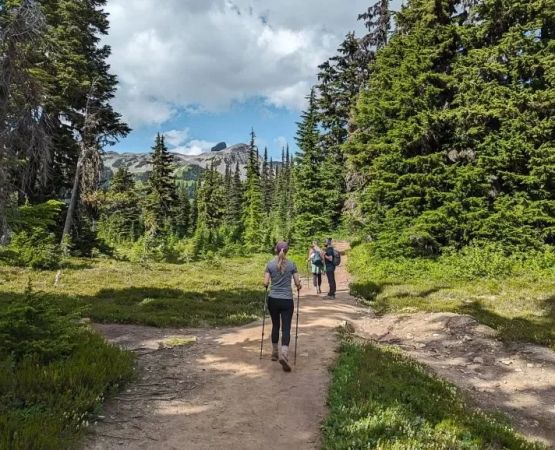How to Camp in Plateau Ridge Zones: Ultimate Guide to High-Altitude Camping
1. Understanding Plateau Ridge Zones
Plateau ridge zones are elevated areas typically found at the borders of mountain ranges, offering breathtaking views, fresh air, and an opportunity for peaceful solitude. However, camping in these high-altitude environments presents unique challenges that require proper preparation and knowledge. Unlike standard campsites, plateau ridges can have varying weather conditions, higher winds, and lower oxygen levels, all of which affect your camping experience.
The plateau ridge environment is characterized by expansive flatlands with occasional steep slopes, often covered with sparse vegetation and rugged terrain. Understanding these geographical and climatic factors is key to enjoying a safe and comfortable camping experience. Whether you're an experienced hiker or a first-time camper, knowing what to expect can make a huge difference in your adventure.
2. Best Time to Camp in Plateau Ridge Zones
Due to the high altitude, plateau ridge zones are subject to extreme weather variations, including colder temperatures, strong winds, and unpredictable storms. It’s crucial to choose the right season for camping in these areas. The best time for plateau ridge camping is typically during the late spring to early fall months. During this period, the weather is generally more stable, and temperatures are milder, making outdoor activities more comfortable.
2.1 Spring and Early Summer
Spring and early summer (May to July) offer the best conditions for camping in plateau ridges. The snow from winter begins to melt, the vegetation starts to bloom, and the weather tends to be warmer, especially at lower elevations. However, be prepared for chilly nights and occasional rain showers, so pack appropriately for varying conditions.
2.2 Late Summer to Fall
Late summer and fall (August to October) also provide excellent opportunities for high-altitude camping. The days are usually clear, and the cooler air makes hiking and outdoor activities more enjoyable. However, as temperatures drop, especially at night, it’s important to bring adequate insulation and warm clothing to stay comfortable during colder evenings.
3. Essential Gear for Plateau Ridge Camping
Camping in plateau ridge zones requires specialized gear to ensure comfort, safety, and protection from the elements. Here’s a breakdown of what you’ll need to pack for your high-altitude adventure:
3.1 Tent and Shelter
A durable, weather-resistant tent is a must for plateau ridge camping. Choose a four-season tent designed to withstand strong winds and cooler temperatures. These tents typically have reinforced structures and weatherproof features to protect you from the elements. Look for tents with good ventilation to avoid condensation buildup, which is common in cooler climates.
3.2 Sleeping Bag and Pad
At higher elevations, temperatures can drop significantly at night, so it’s essential to have a sleeping bag rated for cold weather. Choose a bag with a temperature rating suitable for the conditions you might face. A sleeping pad is also crucial for insulating you from the cold ground and providing comfort during sleep. Opt for a foam or inflatable pad with good R-value for better insulation.
3.3 Clothing for Cold Weather
Layering is key when it comes to staying warm in plateau ridges. Start with moisture-wicking base layers, followed by insulating layers like fleece or down jackets, and finish with a waterproof, windproof outer layer. Don’t forget warm gloves, a hat, and a scarf to protect yourself from the cold wind. High-altitude environments can change rapidly, so it’s important to be prepared for sudden weather shifts.
3.4 Food and Water
Due to the remote nature of plateau ridge zones, it’s essential to carry enough food and water for your trip. High-energy, lightweight meals like freeze-dried food or energy bars are great options. For water, bring a filtration system or purification tablets, as natural water sources may be contaminated. Ensure you have a way to melt snow or ice if necessary for water supply.
4. Navigating the Terrain
Plateau ridges can present challenging terrains with rugged paths, rocky slopes, and uneven ground. When navigating these areas, it’s essential to have a good map, compass, or GPS device. If you’re unfamiliar with the terrain, consider hiring a local guide or joining a group for safety and assistance.
4.1 Trail Safety
When hiking or camping on plateau ridges, always stay on established trails to avoid getting lost or damaging delicate vegetation. Pay attention to trail markers and signs that indicate key landmarks or potential hazards, such as cliffs or areas prone to rockfalls.
4.2 Weather Awareness
Due to the unpredictable weather in plateau ridge zones, it’s essential to monitor weather forecasts before and during your trip. Be prepared for sudden temperature drops, strong winds, and even storms. Always have an emergency weather radio or device to stay updated on changing conditions, especially in remote areas where weather can change unexpectedly.
5. Safety Considerations for High-Altitude Camping
Camping at higher altitudes can cause physical challenges, such as altitude sickness, which occurs when the body is not accustomed to the lower oxygen levels found at higher elevations. Symptoms can include headaches, nausea, dizziness, and fatigue. To avoid altitude sickness, it's important to acclimate gradually by ascending slowly and allowing your body to adjust to the thinner air.
5.1 Altitude Sickness Prevention
To prevent altitude sickness, make sure to hydrate well and take breaks during hikes. Avoid overexerting yourself on the first day, and allow for plenty of rest. If you begin to experience symptoms, it’s essential to descend to a lower elevation and seek medical attention if necessary.
5.2 Emergency Kit
Carry an emergency kit that includes basic medical supplies, such as bandages, antiseptics, pain relievers, and a first-aid manual. Include a high-altitude medication, such as Diamox, to help prevent altitude sickness if recommended by your doctor. A whistle, flashlight, and multi-tool can also come in handy for emergencies.
6. Respecting the Environment
Finally, when camping in plateau ridge zones, it's crucial to follow Leave No Trace principles. These areas are often delicate ecosystems that require special care. Pack out all trash, avoid disturbing wildlife, and stay on established paths to minimize your impact on the environment. By following these principles, you help preserve these beautiful areas for future campers and generations to come.
6.1 Leave No Trace Principles
Remember to clean up after yourself and leave the area as pristine as you found it. Avoid starting fires in restricted areas, and only use designated fire pits if allowed. Respect the wildlife, and never feed or approach animals to ensure their safety and yours.
Camping in plateau ridge zones offers a unique and rewarding experience, but it also comes with its own set of challenges. By being well-prepared, respecting the environment, and taking necessary precautions, you can ensure a safe and enjoyable adventure at high altitudes. For expert guidance and gear recommendations, visit Pine Cliff Resort for your ultimate outdoor experience.







